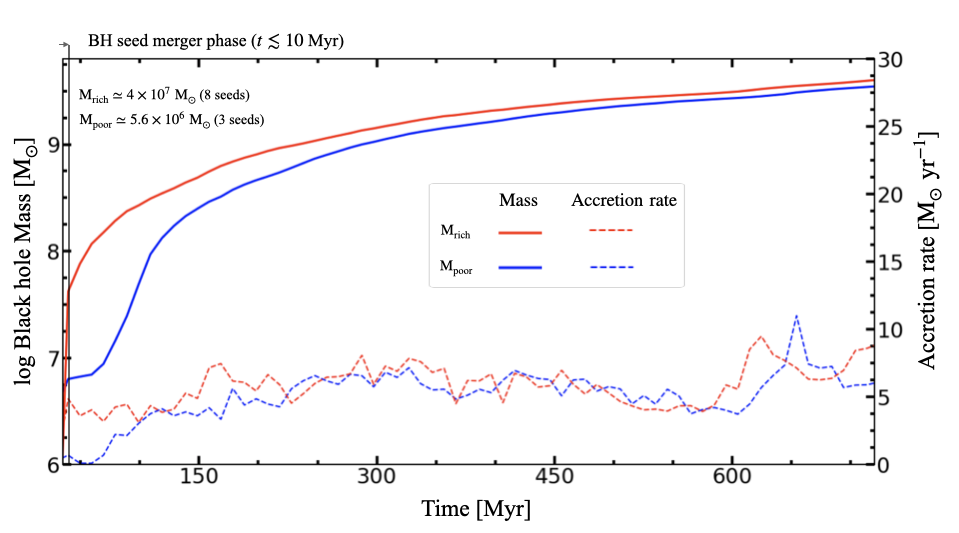
Aenean ornare velit lacus, ac varius enim lorem ullamcorper dolore aliquam.

Supermassive black holes (SMBHs) have been observed as active galactic nuclei (AGN) at redshifts greater than 7, indicating that the universe was only about 1 billion years old (109 years) at that time. In this relatively short period, SMBHs needed to grow from 106 solar masses to 109 solar masses, presenting a significant challenge.
Our hydrodynamic simulations suggest that the physics of molecular clouds could provide a solution. By distinguishing the properties of atomic gas and giant molecular clouds, we found that the growth patterns of SMBHs are significantly different.
See our paper for more details "Rapid Growth of Galactic Supermassive Black Holes through Accreting Giant Molecular Clouds during Major Mergers of Their Host Galaxies".
"New advances in formation theory of supermassive black holes".
"Unveiling the Rapid Growth of Supermassive Black Holes".
"How Did Supermassive Black Holes Grow So Quickly, So Early?".
Relative to minor mergers, major mergers are rare and usually disrupt the original disk and bulge of galaxies, resulting in an elliptical galaxy. In our research, we applied minor mergers as a way to increase the size of the bulge radius. The bulge radius grows from 0.9 to 1.9 kpc, and the mass increases from 4.7 x 1010 to 7.0 x 1010 solar masses after two minor mergers with dwarf galaxies.
P2 here.
P3 here.
P1 here.
P2 here.
P3 here.